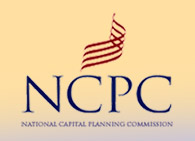|
Urban Design and SecurityThe threat of terrorism, underscored by the events of September 11, has made security a necessary feature of life in the nation's capital. Yet the federal government's response to this threat has adversely affected Washington's historic urban design and streetscape. Street closures have increased traffic congestion; disrupted local business activities; and marred the beauty and historic design of the nation's capital with hastily erected jersey barriers, concrete planters, and guard huts that ring our buildings and line our streets. The National Capital Planning Commission formed an Interagency Security Task Force in March 2001 to identify permanent, comprehensive solutions to this problem, which took on increased urgency in the wake of September 11. In the fall of 2001, the Task Force released Designing for Security in the Nation's Capital (PDF), a report that makes recommendations for improving security and urban design in the Monumental Core. The Task Force recommended that NCPC prepare a comprehensive security plan that identifies permanent security and streetscape improvements that should be developed. NCPC released the National Capital Urban Design and Security Plan in October 2002. Since then, the plan has led the nation in exploring innovative urban design solutions to meet heightened perimeter security requirements. NCPC's brochure, Designing and Testing Perimeter Security Elements, provides guidance to designers, architects, security professionals, and building managers on applying the latest creative perimeter security solutions and effectively testing these technologies. Pennsylvania Avenue in front of the White House was a primary focus of the plan. Following the Oklahoma City bombing in 1995, the street was closed to vehicular traffic, exacerbating traffic problems and undermining the symbolism of the President's house. Based on legitimate security considerations, the task force agreed that this portion of the street should remain closed to vehicular traffic but recommended that the situation be reassessed should there be vast improvements in security technology. To reverse the effects of the closure, the task force called for doing away with barricades and creating a new, distinguished, pedestrian-oriented public space that respects the historic integrity of the street. The Commission invited four of the country’s top landscape architecture firms to submit concepts for creating a pedestrian-oriented public space at Pennsylvania Avenue in front of the White House. Michael Van Valkenburgh Associates, Inc. was selected to create this significant precinct. In November 2004, Pennsylvania Avenue in front of the White House was reopened as a dignified new civic space featuring pedestrian-friendly amenities and furnishings. The redesign of America's Main Street has transformed the Avenue from one cluttered with ad-hoc security measures to a beautiful civic area befitting one of the nation's most prominent and visited destinations. Another recently completed project brings attractive security to one of Washington’s most iconic structures—the Washington Monument. Previously surrounded by a ring of jersey barriers, the monument grounds had become an eyesore along the National Mall. The new security scheme features new pedestrian pathways, sunken seating walls, upgraded lighting, granite benches, and hundreds of new trees to complement the monument’s landscape setting. The improvements at these two symbolic locations demonstrate how the National Capital Urban Design and Security Plan is transforming the way that federal government secures its land and buildings in the nation’s capital. NCPC looks forward to continued improvements in security planning and design throughout the region. Associated Material: National Capital Urban Design and Security Plan Objectives and Policies - Adopted May 5, 2005 Design and Testing of Perimeter Security Elements Policy: NCPC Policy for the Design and Review of Physical Perimeter Security Improvements Workshop Proceedings: "Surviving Security," November 4, 2004 Publication: Designing for Security in the Nation's Capital
Brochure: Pennsylvania Avenue at the White House Design Proposals: Designs by Balmori Associates, EDAW Inc., Michael Van Valkenburgh Associates, Inc., and Peter Walker and Partners Environmental Assessment: Pennsylvania Avenue at the White House |
401 9th Street, NW
North Lobby, Suite 500
Washington D.C. 20004
Phone: (202) 482-7200
Fax: (202) 482-7272
Email: info@ncpc.gov
North Lobby, Suite 500
Washington D.C. 20004
Phone: (202) 482-7200
Fax: (202) 482-7272
Email: info@ncpc.gov


